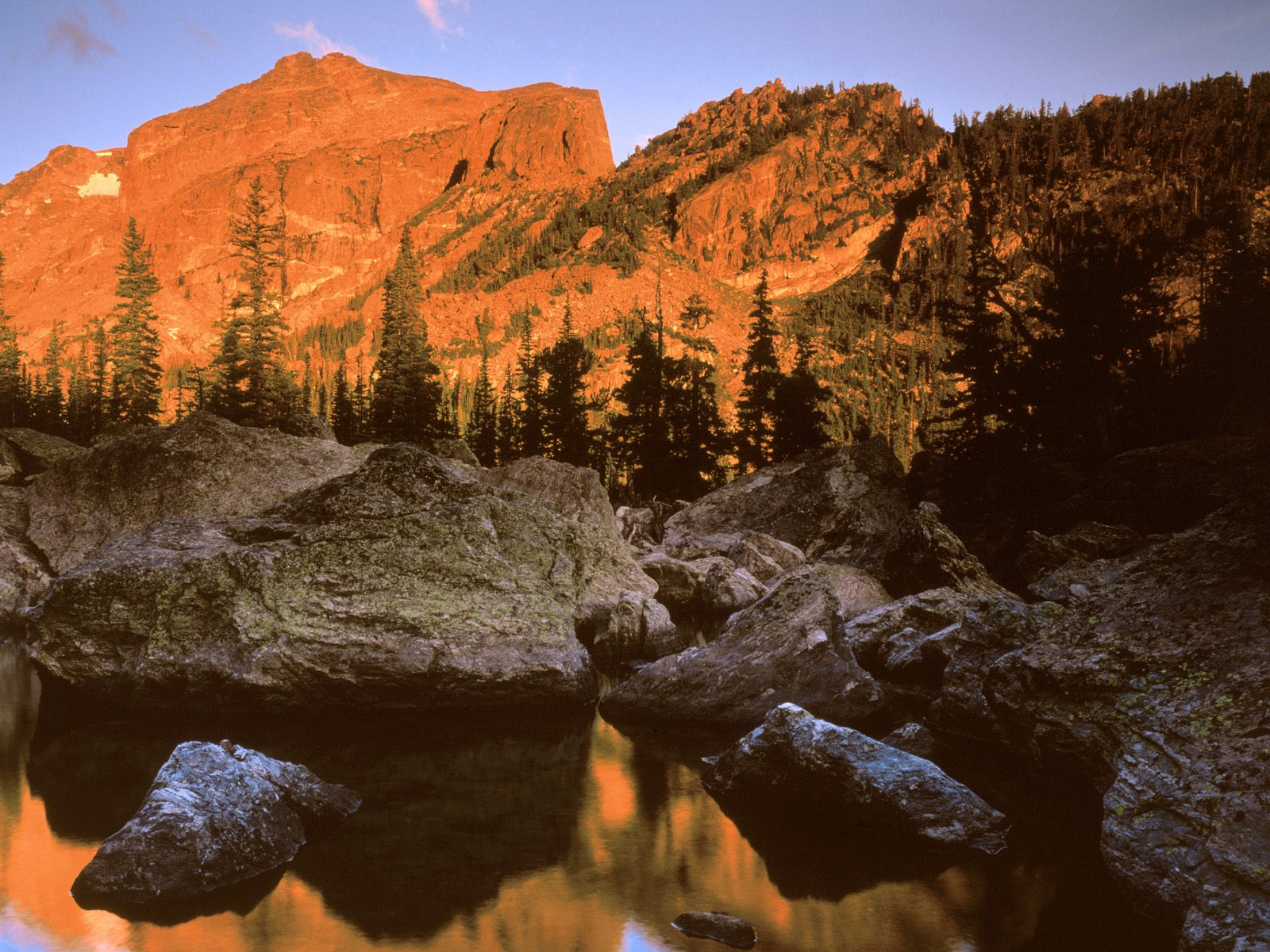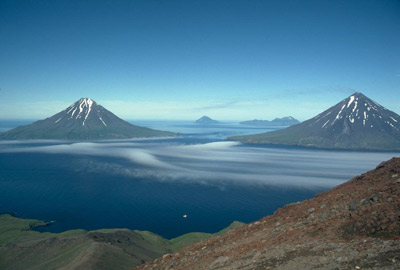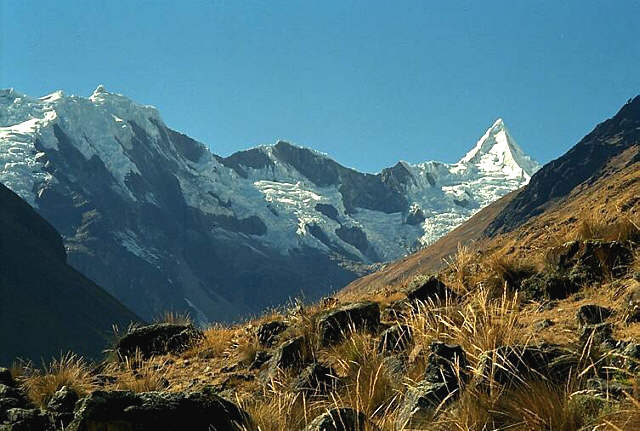 |
Mountain Building |
 |

 |
Mountain Building |
 |


Mountain Range
Orogenesis is a term for the processes that create a mountain belt. It is widely accepted that mountain building occurs at convergent boundaries where compressional forces are great enough to fold, fault and metamorphose rock.

Aleutian type mountain building.
Aleutian type mountain building occurs where two oceanic plates collide and one is subducted under the other. The mantle edge above the subducting plate undergoes partial melting to create a volcanic island arc on the ocean floor. The volume of crust is increased by volcanic activity, magma production and sediment accumulation from the subducting plate.

Andean type mountain building.
Andean type mountain building occurs along continental margins where an oceanic plate meets a continental plate. This arrangement causes the development of a volcanic arc inland of the continental margin. Andean type mountain building begins with the continental margin being a passive margin or a part of the oceanic crust of the adjoining plate. The continental margin becomes active when a subduction zone forms. As the plate subducts partial melting of the continental plate results in a continental volcanic arc. An accretionary wedge forms as oceanic sediments accumulate on the landward side of the trench.
Continent-continent collisions can also result in mountain ranges. In these collision types, the continental crust is too buoyant to subduct. Isostasy is the buoyancy of the continental crust as it rests on top of the denser mantle.
A final way to create a mountain range may be the accumulation of crustal blocks on continental margins by collisions. These small crustal blocks are known as terranes.
Figure 9.23
Back to Mountain Building Page 3 |
Go To Mountain Building Assignments |